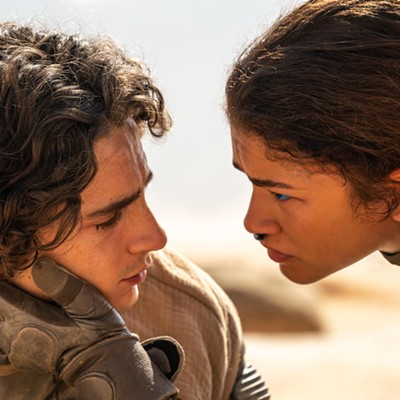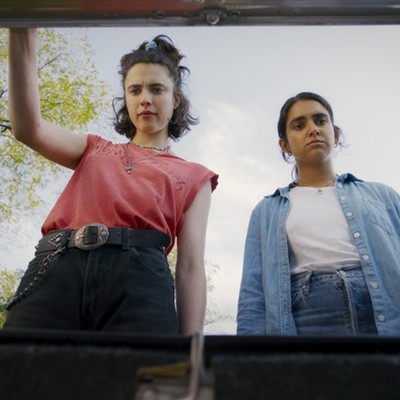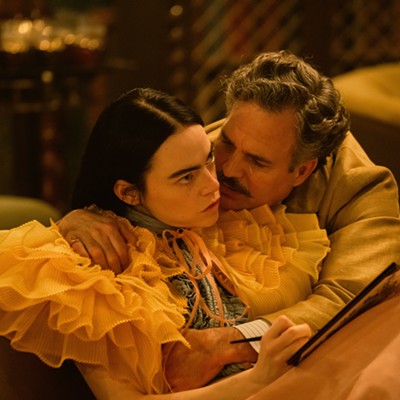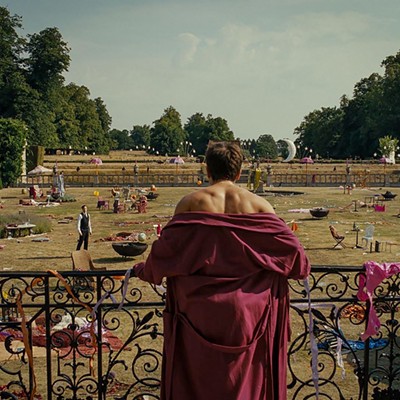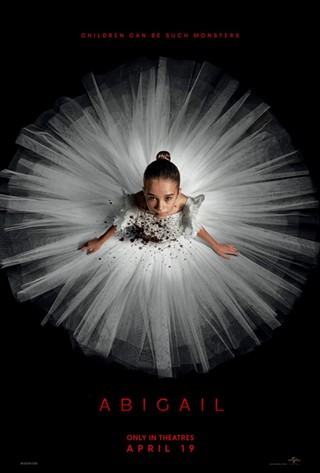So how will the worst-reviewed film appeal to the citizens of the best-(self-)reviewed nation in the world? Well, Americans will largely dislike Brown Bunny, and they won't be entirely wrong to do so, though it does have some strong merits, and is, for the true cinema buff, probably worth checking out.
Vincent Gallo shoots, writes, produces, stars in, directs and does the special effects for this film. He also appears in almost every scene, which makes his having shot Brown Bunny seem a bit of a mystery, but maybe he has really long arms or something.
This sort of Barbra Streisand level of self-indulgence is part of what opened Gallo up for such vicious attacks. At more than two hours, his original version of the film was no doubt too long, and the urge to keep in every blurry scene of his handsome face staring painfully out the window for 27 minutes apparently overwhelmed his better artistic abilities.
However, the version that Gallo is releasing here in the U.S. of A. clocks in at only 93 minutes, which shows that the one thing artists really need is a cadre of cruel-hearted critics calling their creations crap. In response to the critical drubbing, Gallo has turned excremental excess into, if not perfect art, at least something interesting.
The first hour of the film is essentially a riff on early-'70s counter-culture road movies. Shot in gorgeous, often out-of-focus Super 16 millimeter film, it's gorgeously grainy, with lots of the requisite filtered sunlight shots that look so good on low-end celluloid.
Gallo plays Bud Clay, a motorcycle racer who has lost, or perhaps just misplaced, his girlfriend or wife. She was last seen somewhere in California, and so he drives from a leafy New England toward the barren West, searching for her by staring soulfully into the setting sun.
Since his beloved was or is or will be named Daisy, every time he meets a girl or woman or successful post-op transsexual with the same name as a flower, he falls in love for, like, 30 minutes.
These scenes are great. Gallo is so good-looking and strangely charming that it seems believable when random cute teens suddenly decide to run away with him. Some really fine performances, notably from newcomers Anna Vareschi and Elizabeth Blake, make this work in a way that original Gallo girls Winona Ryder and Kirsten Dunst probably couldn't have pulled off. (Gallo fired them about a week into shooting and replaced them with unknowns.)
One of the best bits does involve a star, but an astonishingly faded one. Former Charlie's Angel hardbody Cheryl Tiegs, looking as weathered as Florida in August, does a nearly silent number as a weepy woman at a rest stop that's stunning, weird and effective.
Mostly, though, the film is just Gallo looking sad behind the wheel as the United States rolls out before him like a giant burrito of sorrow. It's pretty and self-indulgent and sweet, and, while boring in a sort of calculated way, it's hypnotic enough that you don't care. In fact, it pretty much captures the experience of driving across America, which is something that films that feel they need endless action and teenagers with enlarged breasts never seem to get.
So for the first hour, this is like some of the best, or at least not the worst, of American '70s cinema, a sort of slowed-down Easy Rider or Five Easy Pieces. Then, Chloë Sevigny appears and sucks, amongst other things, the life out of the movie.
A big part of the problem is that she has to spout some really awful and artificial dialogue. The dialogue actually makes sense in the context of the film, but that doesn't stop it from being painful to sit through.
Plus--and I hate to say this about someone as preternaturally cute as Chloë Sevigny--she couldn't act her way out of paper bag full of Keanu Reeveses and Cindy Crawfords. Sure, she was decent in Oh No, My Boyfriend's a Girl!: The Brandon Teena Story, but she didn't really have a lot to do in that film. She does, however, have certain skills that Gallo exploits in this film. I can't say precisely what those skills are in a family newspaper like this one, but let's just say that the Hoover and Electrolux corporations are in a bidding war to make Ms. Sevigny their official spokesperson.
You also get a look at one of Mr. Gallo's hidden charms, which is surprisingly sleek and well-shaped. It really should have been given separate billing, and I'd be surprised if it doesn't get more roles in the future.
Still, although the ending literally sucks, Brown Bunny has enough going for it to make the final scene almost forgivable. It doesn't quite live up to the films it emulates, but if Gallo can keep restraining himself and listening to the chorus of critics who really have his best hopes at heart, then his next film should be perfect.

